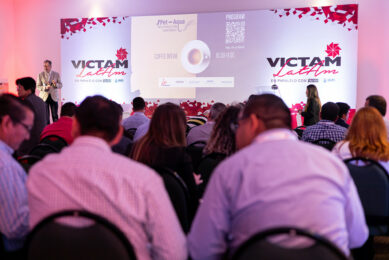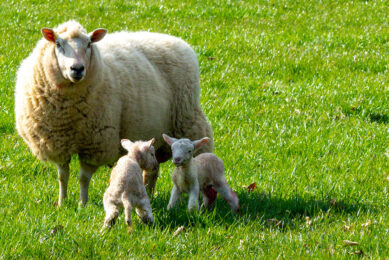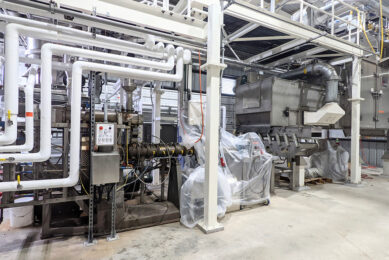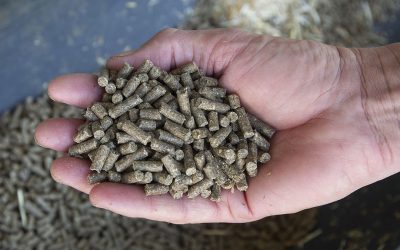Solving the feed structure dilemma with the Kahl Crown Expander
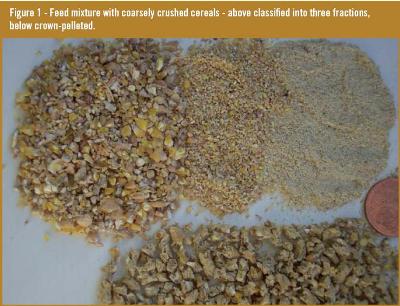
At Victam International 2011 held in Cologne, Germany, the Crown Expander of Amandus Kahl was awarded with a Golden Innovation Award. Dr Heinrich Graf von Reichenbach explains in this article how Kahl with this innovation succeeds in keeping a coarse feed structure and at the same time compress the feed to pellets in an expander system.
For some time now and particularly in Germany, but also on a global scale, many have turned away from the hitherto customary fine grinding of pig and poultry feed. For a time, fine grinding was seen as key to achieve high feed conversion rates and good pellet quality with low fines. But today, it is recognised more and more that the vulnerability of our livestock is growing with the genetic progress and that finely ground feed can cause major health problems and reductions in performance. Recent research on pigs has proven that too many fine particles in the feed cause stomach ulcers, so that the majority of the animals for slaughter is already severely damaged. In addition, Kamphues et al. (2007) underline the importance of coarse grinding for the suppression of Salmonella in pigs. Betscher et al. (2010) refer to the pH-grading of coarse feed structures in the stomach of pigs and poultry, which is not only immunologically important, but also a prerequisite for a high activity of the protein digestive enzyme pepsin.
Today’s high-performance broilers respond to very fine feed structures with changed development of the gastro-intestinal tract: Glandular stomach and pancreas are enlarged and the gizzard is underdeveloped, resulting in health problems and in a reduced performance. Especially under extreme climatic conditions at higher altitudes, which promote the development of abdominal dropsy (ascites), the coarsely ground structure is of particular importance for a good health and high performance of the animals.Various studies have shown that higher contents of coarsely crushed cereals exercise a healthy effect on broilers and that feed conversion and weight gain were not reduced by coarse feed components, but in fact increased. In the latest feeding tests, both structurally ground and expanded broiler feed showed a better protein utilisation and a higher lysine effectiveness than finely ground or not expanded feed.
Structural grinding
In the meantime, many feed manufacturers have responded to this by changing to structural grinding with the crushing roller mill. With this machine uniformly coarse particle structures can be produced at high throughputs, low energy input and without expensive explosion protection measures.Practice has shown, however, that a large segregation problem is associated with the use of uniformly coarsely crushed cereals in the rations: Compound feed does not only contain cereals, but also numerous components which are naturally finely ground or at least have a high content of fines. Protein carriers such as soybean and rape extraction meal as well as some concentrates and additives are particularly worth mentioning. While finely ground feed components are largely stable to segregation, mixtures of coarse and fine particles tend to segregate considerably. During transport the fine particles fall through the coarse particle matrix producing a layering from coarse to fine. Figure 1 shows the heterogeneous grain size distribution of a compound feed with a coarsely ground cereal content. The fine and medium fractions mainly consist of soybean meal, premix and minerals, and the coarse fraction of cereal particles with a high starch content.
Post-crushing in the press
The usual practice of pelleting counteracts a segregation of heterogeneous grain size mixtures, but the pelleting process is accompanied by a strong post-crushing of the coarse feed structures. The pelleting press acts like a pan grinder mill, the significant post-crushing effect of which has been proven by different sides. So, the positive effect of structural grinding with the crushing roller mill is largely offset by traditional pelleting and the fines content in the feed is increased significantly.
Preservation of coarse particles
In recent years, the annular gap expander has acquired a solid position in the compound feed industry world-wide. In the Netherlands alone, more than 80 Kahl annular gap expanders are in operation. A large part of the North American turkey feed is expanded before pelleting, and also in South America the expander experiences a boom. Leading feed producers point out that the expansion of coarsely ground feed mixtures does not (significantly) cause post-crushing of the coarse particles. Embedded in the matrix of the surrounding fine particles, the pressure and shear forces are distributed on the total volume of the coarse particles, which are thus treated with care mechanically, despite all hydrothermal effect. Figure 2 shows the strong, well-preserved primary particle coarse structure of a barley-containing pig feed after grinding with the crushing roller mill and conventional annular-gap expansion.Contrary to the pelleting press, the annular gap expander does not produce regularly shaped and cut pellets, but a so-called “Expandat” of irregular flaky shape and surface. This is why the compound feed industry demanded: “Optimise the annular gap expander to the effect that the expanded product will be shaped and cut to regular pellets. The coarse particles in these pellets must not be post-crushed significantly. The pellets should be dried by cooling alone, energy consumption and throughput of the expander are to correspond to that of a pelleting press, and the energy inputs or process intensity should be very easy to control.”
Crown development
The basic idea was to provide the proven Kahl annular gap expander with a die and a cutting device. The die was designed as a ring-shaped extension of the tubular case of the expander. This ring can either be provided with longitudinal slots or holes. An important prerequisite for a high throughput of the machine was that a large number of slots or holes can be placed on the annular circumference. A rotating cutter was designed, the knives of which cut the product strands leaving the die to uniform granulate or pellet lengths.
So the Crown Expander was born. The machine owes its name to the crown form of the first test dies which were provided with slots instead of holes. One important component of the annular gap expander remains unchanged in the Crown Expander: The hydraulically moveable cone, which is moved into the crown die end like a piston closing it backward. With retracted cone, the only way for the product is to go through the die holes (see Figure 3). In addition, the cone is used as a control element: The deeper it is pressed into the crown, the smaller the opening is of the slot or bore cross-section of the crown die for product discharge. With decreasing passage cross-section, however, the energy required for pressing the product through it increases. The higher the energy input, the more the product temperature and hence the modification and expansion degree rise.
By varying the cone position in the crown, important process parameters can be influenced and so the process be controlled rather simply. Even specific energy inputs into the feed can be preset in the control system; these will be adjusted by the hydraulic system of the cone after start up.
In conventional extruders, the number of die holes cannot be varied during the extrusion process, nor can it be varied during the pelleting process with pelleting mills. Here, the “open perforated surfaces” are constant, and these determine, in conjunction with the effective bore length and geometry, the energy input during extrusion.
Throughput and energy consumption
The throughput of the Crown Expander is essentially determined by the mechanical energy input into the feed desired or required for shaping. The diameter of the crown holes plays a role too; and of course the formula components, their grinding and in particular the fat content in the formula have an influence on the mechanical energy consumption.For the production of stable pellet structures with low fines content, a certain adhesiveness of the feed mixture is required which is mainly achieved by starch modification as well as by influencing the protein folding structures. This requires that certain minimum temperatures are reached. An intensive pre-conditioning with steam raises the temperature level of the raw materials in advance and minimises the necessary mechanical energy input by the Crown Expander. This is not higher than in case of pelleting with a pelleting press. If a particularly high modification is to be reached or extra hard pellets are to be produced, the mechanical energy input can also be increased.
It is also important that “crown” pellets do not have to be dried separately, but that the product, just like simply pelleted pellets, are dried simultaneously to storage stability in a conventional cooling process.
Success and proof in practice
With high throughput and low energy consumption, the Crown Expander produces pellets or regularly shaped product aggregates. Coarse particles remain unchanged; fine particles are agglomerated. The expander treatment also serves for excellent hygienisation of the feed. Then there are the positive nutritional effects that have long been known from expanded feed – an advantage which cannot be achieved by conventional pelleting. As the coarse particles are embedded in the aggregated matrix of the fine particles, any segregation tendency of the feed is suppressed. In contrast to feeding mash feed, poultry can no longer select individual particles, but must peck the feed in the desired composition. In case of liquid feeding of pigs, the crown pellets show the known advantages of Expandat, i.e. a good solubility in water and the formation of a homogeneous and stable liquid feed mixture.
Fat absorption
The surprisingly high absorption capacity of the crown pellets turned out to be an additional advantage. How difficult was it so far to add larger amounts of fat or oil to the pellets post-pelleting? The micro-capillaries of the crown pellets, however, soak up oil, fat and other liquids like a sponge. Even large amounts of fat and oil are absorbed completely, without any costly vacuum technology. The crown pellets remain free-flowing and do not stick together. These features predestine the crown pellets for use in supplementary feed with a high protein and fat content. The first Crown Expanders have already demonstrated their efficiency for more than one year in several compound feed factories both in Germany and abroad. They prove to be good for modification of feed components, production of pig feed crumbs and pellets, and pelleting of broiler feed – the machines are multi-taskers. The acceptance of the feed by the animals is excellent and the nutritive effects are convincing.




